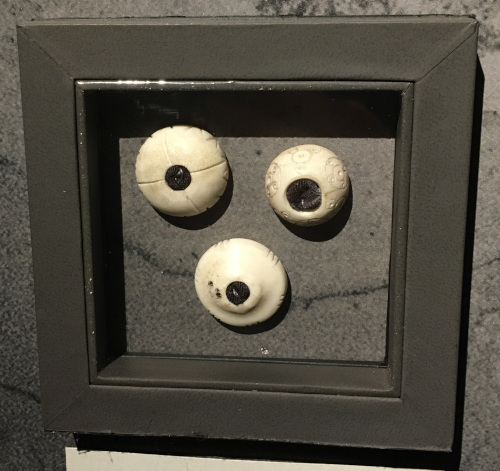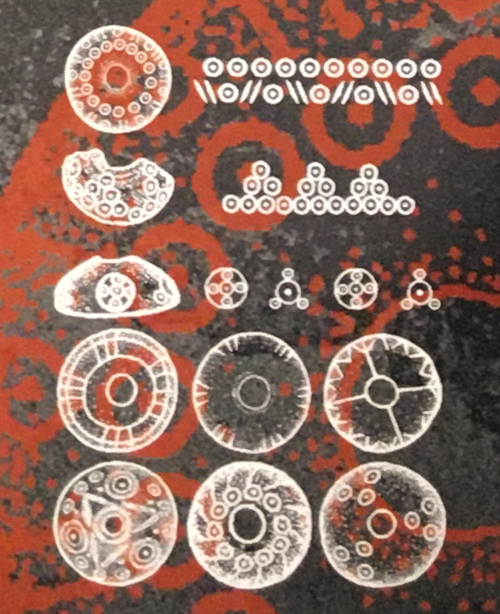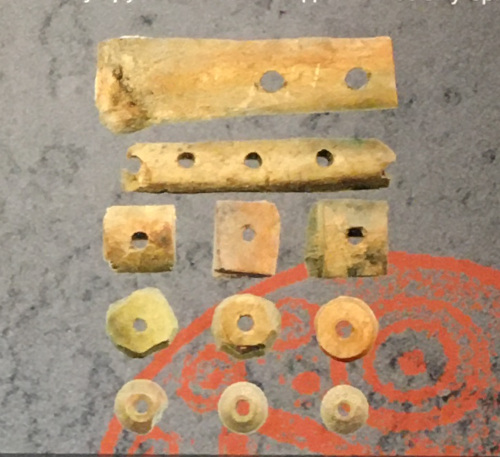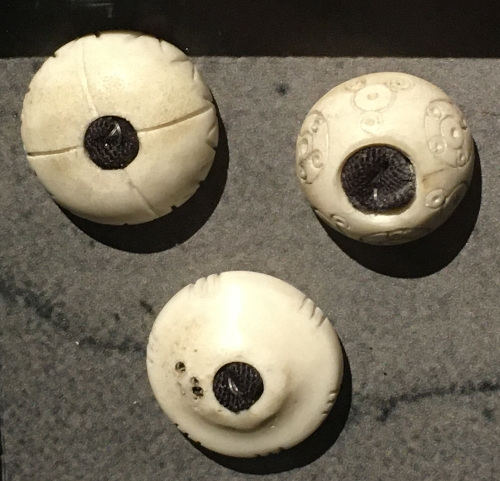
In Kyivan Rus’, Kyiv was the center of bone button manufacture. There existed a number of craft shops where artisans did only one thing – designed, created, and decorated bone buttons for their customers. Some were made to order, others were produced and sold to whoever wanted to pay the bill.
Modern reconstructions of bone buttons from Kyiv, the 12th-13th century
Clothing fasteners made from bone existed for centuries and in various parts of the world because this material was available and easy to work with. Even today, people use bone buttons, although they’re not as popular as in the medieval era when they were in use in the Byzantine Empire, Western and Central Asia, Caucasus, and a large part of Europe.
Bone buttons were typical for both men’s and women’s outfits. Often, people used a set of simple identical buttons with one accent button that was larger and decorative. The carvings on the bone usually created cute patterns of lines and circles.
Various patterns on bone buttons from Kyivan Rus’, the 12th-13th century. Drawings based on real archaeological finds
The bone buttons from the 12th-13th century looked similar no matter what part of the world they were from. They were hemispherical or trapezoidal, with one hole in the middle. And the surface was very smooth, thoroughly polished.
How did artisans make medieval bone buttons?
There was a single typical technique for producing such buttons. The craftsman took a long bone plate, divided it into several sections by filing or cutting the bone a little, just to mark the future segment. Then, he drilled a hole in the center of each segment. The segments were cut off the bone plate and became blanks that were processed separately. Each blank was shaped into a hemisphere and polished until the button was good and smooth.
Process of making bone buttons from a bone plate to blanks to ready buttons
As bone buttons were widely in use, the artisans produced them in different sizes and quality, simple and richly embellished, etc so that everyone could buy the fastener they wanted and could afford.
Modern reconstructions of bone buttons from Kyiv, the 12th-13th century. You can see the carved patterns on them. And also, the hole in the middle is of slightly different size






